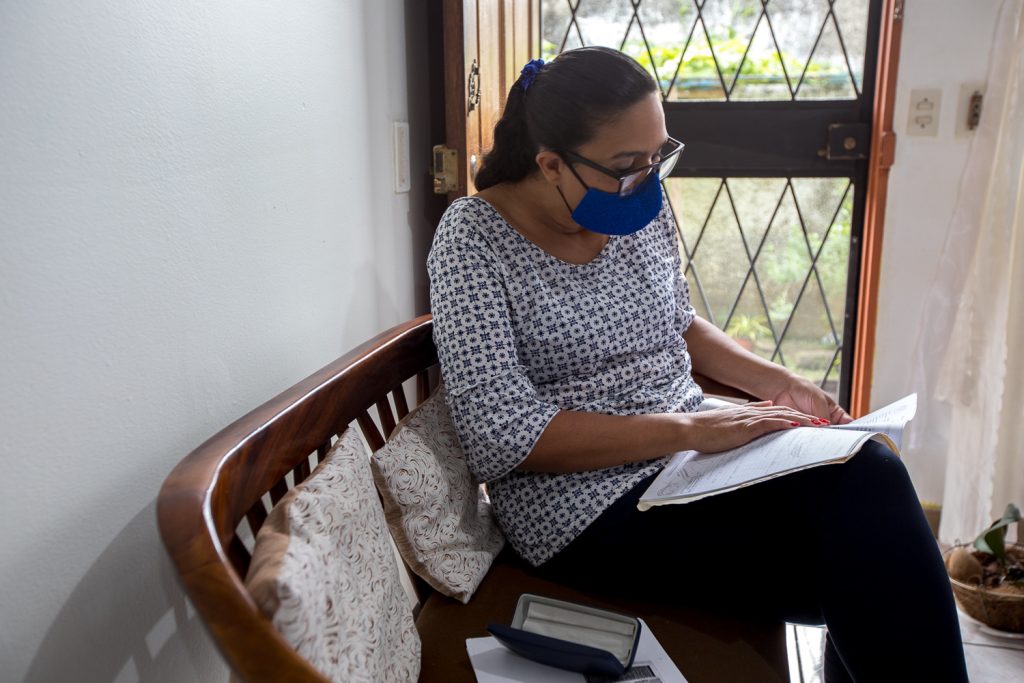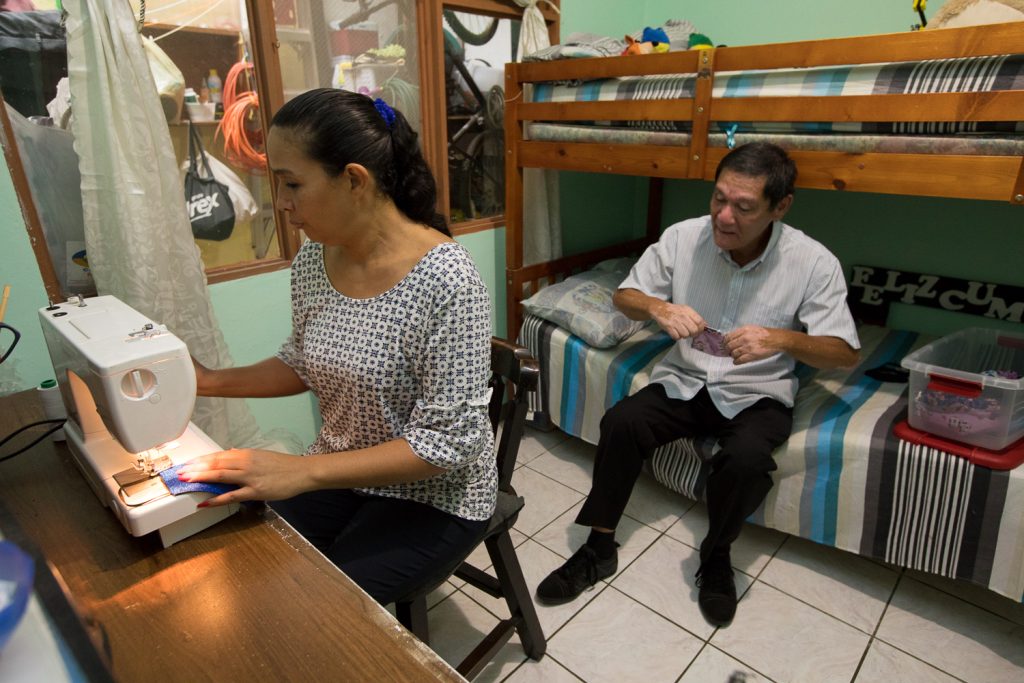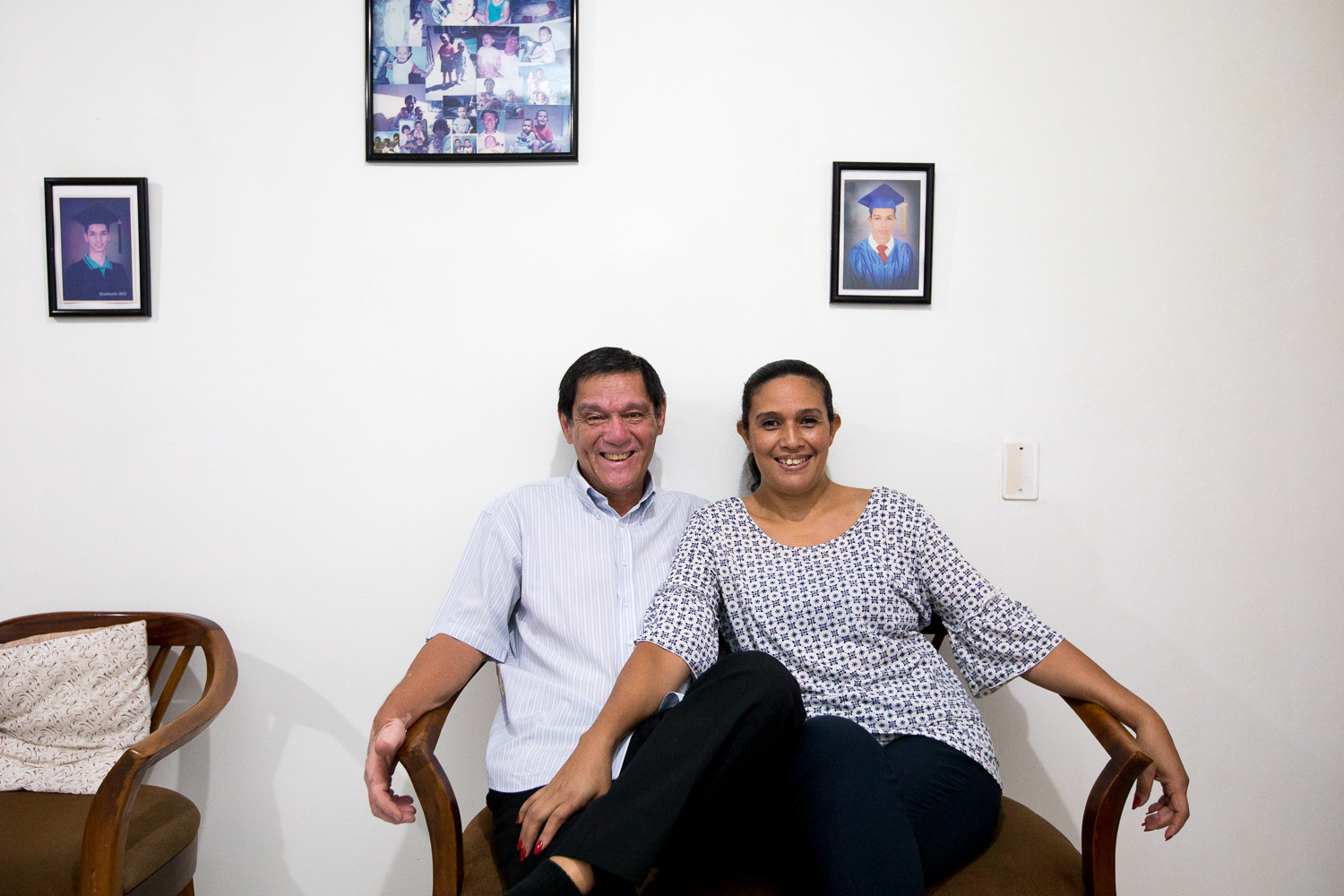In a routine visit to the Marcial Fallas Clinic around 2007, Manuel Cortés Valverde told the doctor that he was going to develop prostate cancer. He was then 55 years old.
Manuel recalls that, as he joked with the doctor, he explained that his brother had been diagnosed with the disease years before. This conversation took place at a public Costa Rican Social Security Fund clinic in Desamparados, a canton in southern San José.
“My brother suffered for about 20 years from the disease,” says Manuel. “He died at the age of 75.”
This news sounded the alarm at the Caja, and Manuel was immediately referred to the San Juan de Dios Hospital in the center of San José. There, for 10 years, he attended control visits every six months, until finally his prophecy came true. On August 28th, 2017, he and his wife Guiselle Lechado Valeciano were told that several small cancerous tumors had been detected in Manuel’s prostate.
“It was just starting for me,” says Manuel about his diagnosis. Unlike his brother, he decided to act quickly to stop the disease.
On November 6th of that same year, Manuel underwent surgery to remove his prostate. The operation was successful; he has not required any further cancer treatment. His doctors have even told him that he should no longer have checkups every six months. An annual checkup is now sufficient.
“Because of early detection, I’m not a widow,” says Guiselle.

Just how deadly is prostate cancer?
According to the Global Cancer Observatory (GLOBOCAN), prostate cancer is the most common cancer in Costa Rica: 56.6 out of every 100,000 people have the disease. That’s 10 more people than the breast cancer statistic.
In terms of mortality, 10.2 out of every 100,000 people die from prostate cancer, compared to 11.5 per 100,000 for breast cancer.
So prostate cancer does kill.

This is a silent cancer. When it presents symptoms, it is very likely that it is already too advanced to be treated; that it has metastasized in other parts of the body such as bones; or that it is generating other health problems such as damage to the bladder.
“This tumor is a slow-growing tumor,” says Dr. Gabriela Barrantes, head of the Urology Clinic at Hospital Calderón Guardia. “When you find a patient with advanced cancer, it is because many years went by without a diagnosis.”
“We cannot know the exact cause of prostate cancer,” she adds. “There are no magic cures.”
According to Dr. Alejandro Calderón from the Strengthening Comprehensive Cancer Care project at the CCSS, there’s no way to address the most important risk factors for prostate cancer: being a man, and being over 50 years old. In cases like Manuel’s, where a relative in the paternal line has had the disease, the risk factor is higher. Another definite risk factor is being Black.
However, “prostate [cancer] is very curable,” says Dr. Gabriela. “I cannot prevent a patient from getting prostate cancer, because I still don’t know what happened to cause him to have cancer. The ideal is to diagnose it in time to use what I have on hand to cure it.”
The specialist explains that the prostate is a gland located between the bladder and the urethra; its basic function is sexual. Operating to remove the prostate cannot be considered a preventive procedure. Due to its anatomical location, the operation can have consequences for the patient.
Both doctors say that the only way to reduce the incidence of death from this cancer is to detect it early, and that can only be achieved by periodically performing two tests at the same time: a blood test for the levels of specific prostate antigen, and a digital rectal examination. Both exams must be performed annually starting at age 50. If the disease exists in the family, control should begin at age 40. Another defined risk factor is being a man of black ethnicity.

In Costa Rica, this early diagnosis occurs in two formats.
In the private sector, men can see a urology specialist for their annual checkup.
In the public sector, men between 50 and 75 years old can go to the Basic Team for Comprehensive Health Care (EBAIS) assigned to their community once a year and request the corresponding exams. Each EBAIS general practitioner is trained and obliged to carry out this control for patients who request it, and if these examinations present anomalies, patients will be referred to urology clinics that are located in different hospitals and clinics in the country where a biopsy will be done. Only the biopsy result will confirm the presence of cancer.
However, as with the breast cancer screening we reported last weekCosta Rica has no nationwide population screening program for prostate cancer. Unlike breast cancer, there are not even any community-specific organized screening programs.
The Prostate Cancer Care Guide. I Level of Attention, developed in 2011 by the Caja, notes on page 28 that the creation of a population screening program in Costa Rica is not recommended, because studies carried out in other parts of the world conclude that “the existing evidence is still controversial in relation to the benefit of a population screening. There is no evidence that participation in screening tests affects people’s quality of life.”
However, the 2014 Standard for the Care of People with Prostate Cancerby the Ministry of Health indicates that “the annual Rectal Exam (RT) should be performed from the age of 40 on all men of black ethnicity and in those with a family history of prostate cancer and from the age of 50 in other men.”
Ultimately, the early detection of prostate cancer in Costa Rica depends on men taking the initiative to go to health centers to request exams.
Educate to break myths
Since January 2018, Manuel, who worked as a private driver all his life, has been working as an Uber driver for a couple of hours every day. He says he loves it, because in addition to leaving his house as a diversion, he always ends up helping a lot of people, almost like a psychologist.
“People have a lot of problems,” says Manuel. “Los muchachitos tell all kinds of stories.” He says he takes every opportunity he gets to talk about prostate cancer and the importance of early detection. “The fact that no one talks to men about taking care of themselves is a huge mistake that exists in Costa Rican families.”
Manuel has also channeled his education efforts through the Association for Prevention and Fight against Prostate Cancer (APRECAP), an organization created in 2011 when a group of family and friends came together on behalf of Enrique Chavarría Rodríguez. He died of a very aggressive prostate cancer at the age of 76.
Jorge Chavarría Cervantes, who is vice president of APRECAP, a founding member, and Enrique’s son, says that the association’s mission is “to try to reduce the mortality rates of prostate cancer through truthful information, and activities with patients and their families.” To achieve this, the members of the association have had to take on the task of educating themselves and doing research.
“We discovered terrible myths that are related to prostate cancer,” says Jorge. “It was an incredible challenge.”
The challenge continues. For example, in June, the month that includes International Prostate Cancer Day, the association conducted an awareness campaign where cancer survivors spoke about many of these myths. They include the idea that prostate cancer only affects very old people,, or if there are no symptoms, there is no cancer.
“[Prostate cancer] is a subject of mockery among men. They are not taken seriously. It is a very delicate subject,” says Jorge. “That was the first challenge: how do we approach men over 40 so that they can speak openly?”
Another myth is that the prostate antigen blood test is enough to detect prostate cancer, and no rectal exam is needed. Source: APRECAP YouTube page.
That has been the main battle in the early detection of prostate cancer.
“We have put in the same effort that we have put into breast [cancer awareness], but there is enormous cultural resistance,” says Fabiola G. Ross, one of the founders and, until a year ago, executive director of the Anna Ross Foundation. “We women have been easier to convince to take care of ourselves.”
Fabiola says that in the information and education campaigns that the Ross Foundation implemented with municipalities before the COVID-19 pandemic, they chose to educate women about prostate cancer, “to see if the message gets home that way.”
APRECAP also tries to carry the message through other channels.
“We have given informative talks in public and private institutions. We have visited universities and even high schools,” says Jorge, who says that the association has decided to educate younger men so that when they reach the age of risk, they are well informed.
“There’s the case of my son, who was 11 years old [when his grandfather he died]: when he was in 10th grade, we had a talk at his school, and it was successful” says Jorge. “You can’t imagine the number of questions they had. It is not that prostate cancer can be prevented: if it’s your turn, it’s your turn. But we can help reduce mortality rates and the impact on those affected, and improve the quality of life of patients and their families.”
The only way to achieve that quality life is by taking the necessary tests for early detection.
“[Digital rectal examination] is a very taboo subject,” says Dr. Gabriela. “Most of the patients arrive super scared, imagining that they’re going to spend half an hour having the digital rectal examination. Who knows what their friends told them over drinks! And when you finish, they say ‘Was that all?’ It’s like putting in a suppository.”
She explains that during the examination, the doctor must touch the prostate to evaluate its size, and determine whether there are hard or suspicious areas. This, combined with the levels of prostate antigen, could indicate that something is affecting the correct functioning of this gland. However, it is not until a biopsy is performed that cancer can be diagnosed or ruled out—as in the case of Manuel. In 2012, well ahead of his positive diagnosis in 2017, he was referred for a biopsy because both screening tests seemed to be altered; however, the results indicated that he was still healthy.
Cultural change must occur not only in patients, but also in doctors who are in direct contact with the male population who may refuse to take the exam.
“Ideally, doctors will educate the patient about the importance of this, and why he has to do it—just as if he were a younger man learning about testicular self-exams, or a woman with a Pap smear,” says Dr. Gabriela. She says that the Caja’s urology specialists make an effort to train the general practitioners of the EBAIS not only in how to perform the exam, but also in the importance of raising awareness with patients.

“I don’t want anyone to go through what I went through,” says Manuel, who experienced more than 20 rounds of exams to detect the disease in the earliest possible state. “I tell men to take care of themselves, and that having cancer is scarier than going for the exam.”
But Manuel’s advice goes beyond prevention. Sitting in the living room of his house—where at the age of 68 he started an effort to make and sell face masks with his wife, in addition to his daily work as an Uber driver—he can call himself a cancer survivor.
“The fact that you are told you have cancer does not mean ‘I’m dead’,” says Manuel. “There are many things that one can do to extend your life, and have a good life, too.”






